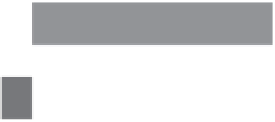Environmental Engineering Reference
In-Depth Information
Rich
countries
Poor
countries
•
•
Field (pests and diseases)
Preprocessing (harvesting, drying
milling)
Transport (spillage, leakage)
Storage (rodents, moisture)
Low
High
•
•
•
•
•
Processing (sorting, peeling)
Distribution (spoilage at retailers)
Consumption (spoilage, waste,
overeating)
High
Low
Figure 10.1
Food losses at different stages of the food supply chain.
Adapted from Lundqvist et al., 2008.
Energy at the time of harvest
4600
Postharvest waste
-600
Used in animal feed
-1700
Calories from animal products
400
Additional 3% from unspecified sources
100
Losses during distribution, retail, and
institutional and household consumption
-800
Net energy available for consumption
2000
Kcal/person per day
Figure 10.2
Losses, conversions, and wastes from the field to the consumer.
Data from Smil, 2000.
2000 calories become available for consumption, which is roughly 43 percent (Fig. 10.2); the
remaining 67 percent accounts for postharvest losses (including processing), conversion
losses when used as animal feed, and spoilage during distribution and consumption. Certainly
not all losses go to waste. In some cases, food products that are no longer suitable for human
consumption are good enough for their applications as animal feed.
Besides the food losses from the primary production in the fields until food reaches
consumers, other wastes are generated in the process, and for the purpose of this discussion the
whole food supply chain will be classified in four levels: (1) during primary production in fields
or farms; (2) during distribution; (3) at the processing facility; and (4) during consumption.


















